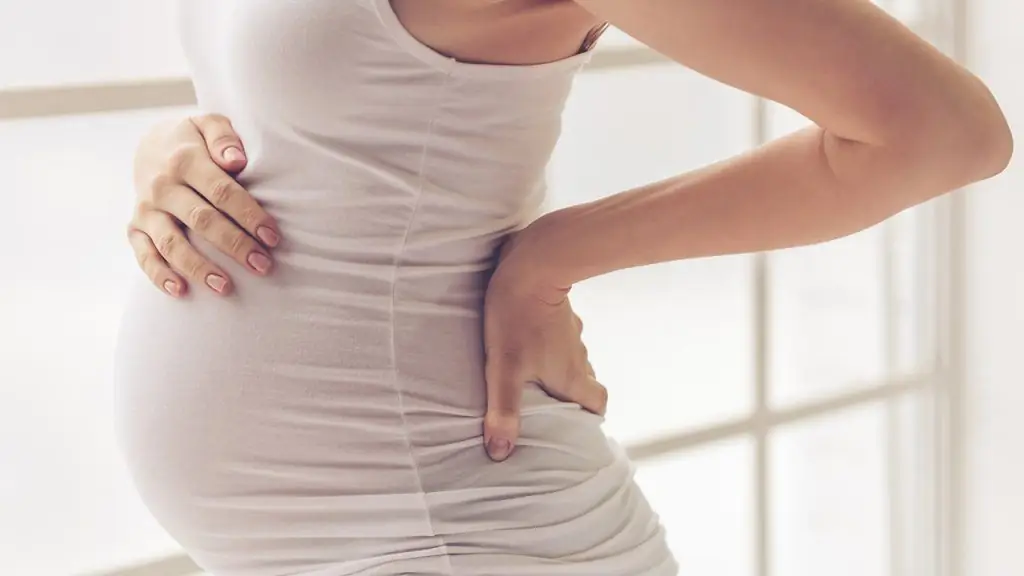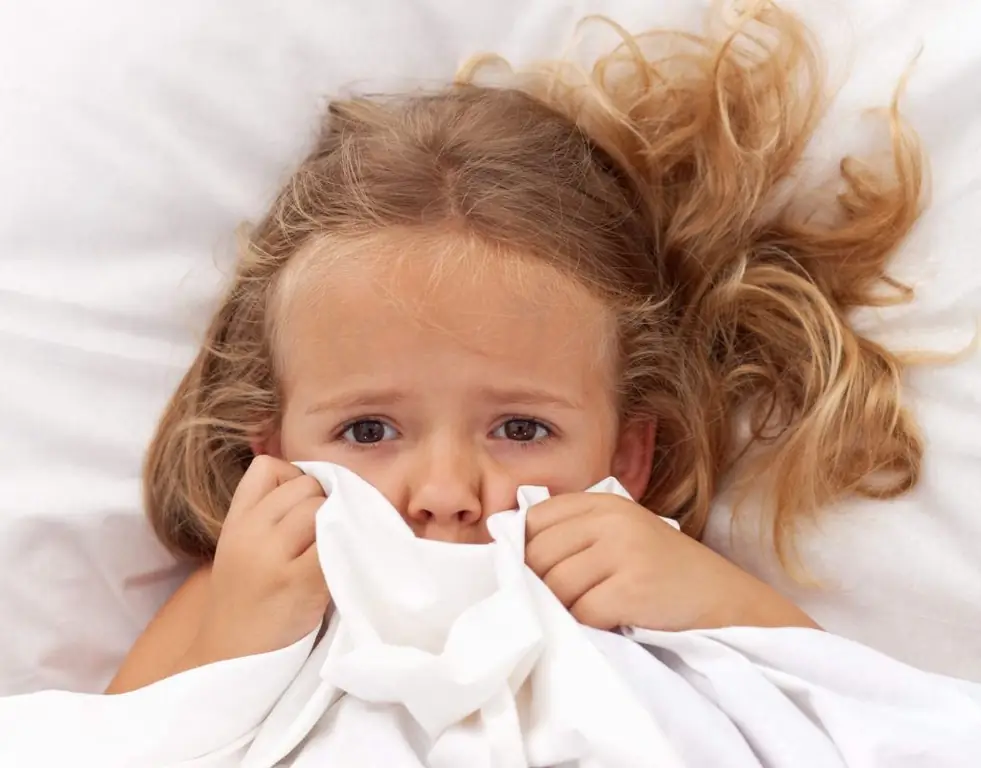2025 Author: Priscilla Miln | [email protected]. Last modified: 2025-06-01 05:14:29
A case of malnutrition in a child is hardly considered rare today. This condition is accompanied by chronic eating disorders, in which the weight of the baby is behind the norm by more than 10%. Hypotrophy can be both intrauterine and develop after the birth of a child. So what are the causes and symptoms of this pathology?
Causes of intrauterine malnutrition in a child
In some cases, a violation of normal nutrition appears even during the intrauterine development of the fetus. Such a child is born already with noticeable symptoms - he weighs much less than normal. Sick children are frail with poorly developed fat and flaky skin.

To begin with, it is worth noting that the mother's nutrition plays a significant role in the development of the fetus, and it is worth taking into account not only the quantity, but also the quality of food consumed. The diet of a pregnant woman should be varied and contain the main groups of nutrients.
On the other hand, malnutrition can also be associated with metabolic disorders in the placenta. To factorsrisks include insufficient blood circulation, early aging of the placenta, as well as late severe toxicosis. Sometimes the reasons lie in adverse environmental conditions. The risk of malnutrition increases with constant stress.
Causes of malnutrition in a child after birth
It is not uncommon for babies to be born quite he althy, but in the next few weeks you will notice a dramatic weight loss. Quite often, malnutrition in infants is associated with malnutrition. For example, a deficiency in subcutaneous tissue is sometimes the result of too little breast milk (or formula). Do not forget that a nursing mother must also eat right, as the quality and satiety of milk depends on this.
On the other hand, the cause of malnutrition may be a disorder in the digestive system. Intestinal infections, dysbacteriosis and some other diseases are often accompanied by vomiting and diarrhea, which, accordingly, creates a lack of nutrients. Risk factors include damage to the nervous system or heart muscle, as well as trauma or congenital anatomical anomalies in the structure of the oral cavity, as this prevents the child from eating normally.
Symptoms and forms of malnutrition in a child

Of course, the signs of this pathology directly depend on its severity.
- Hypotrophy of the 1st degree in children is accompanied by a lag in weight gain by about 10-15%. The amount of fatty subcutaneous tissue decreases mainly on the thighs andstomach.
- The second degree of malnutrition is characterized by a decrease in the layer of subcutaneous fat not only on the trunk, but also on the limbs. The mass delay in this case is 15-30%.
- If the baby's body weight is more than 30% below normal, then doctors talk about the third, severe degree of malnutrition. The fat layer disappears on the trunk, limbs and face.
Treatment of malnutrition in children

Of course, such a condition requires medical attention. First of all, the doctor must determine what is the cause of such an eating disorder. Drug treatment is necessary in cases where malnutrition is the result of certain malformations, infectious or chronic diseases. If the reasons lie in malnutrition, then you need to adjust the diet of the baby or the nursing mother. But the diet should be compiled individually by the attending physician - an additional amount of food should be introduced gradually. An additional intake of mineral-vitamin complexes, walks in the fresh air, as well as regular therapeutic exercises will positively affect the child's condition.
Recommended:
Auto-aggression in a child: causes, symptoms, diagnosis, treatment and prevention

Children's auto-aggression is called destructive actions directed by him at himself. These can be actions of a different nature - physical and psychological, conscious and unconscious - a feature of which is self-harm
Placenta accreta: symptoms, causes, diagnostic methods, possible risks for mother and child, treatment methods and recommendations from gynecologists

The placenta is an embryonic organ that allows the fetus to receive oxygen and nutrition during pregnancy. In the normal state of the woman and the correct course of pregnancy, the placenta is attached at the top of the uterus and remains there until the very time of childbirth. After the birth of a child, it exfoliates from the wall of the uterus and comes out
Lymph node on the child's neck: causes, symptoms and treatment

In simple words, the lymph nodes are the most important link in the immune system. These are a kind of filters on which toxins and other substances dangerous to the body settle. Here they are neutralized by antibodies and excreted from the body. Thanks to this, the lymph is cleansed. Also, the lymph nodes are the producers of lymphocytes, which are then carried throughout the body
Night fears in a child: causes, symptoms, consultation with a psychologist and pediatrician, treatment and prevention of repeated fears

Night fears in a child are classified by experts as a widespread group of sleep disorders. Many parents have encountered their manifestation in their baby at least once in their lives. Most of all, children are afraid of bad dreams, darkness, the absence of their mother, and loneliness
Acetone in the urine of a child: causes, symptoms, norms and treatment

The article will discuss the causes of acetone in the urine of a child, symptoms and treatment. Parents will be able to learn what to do during a crisis and how to avoid it

